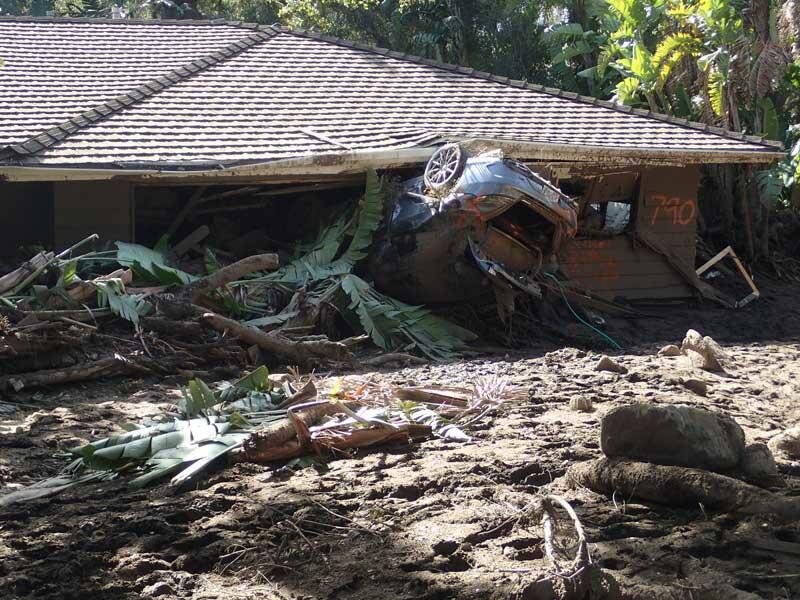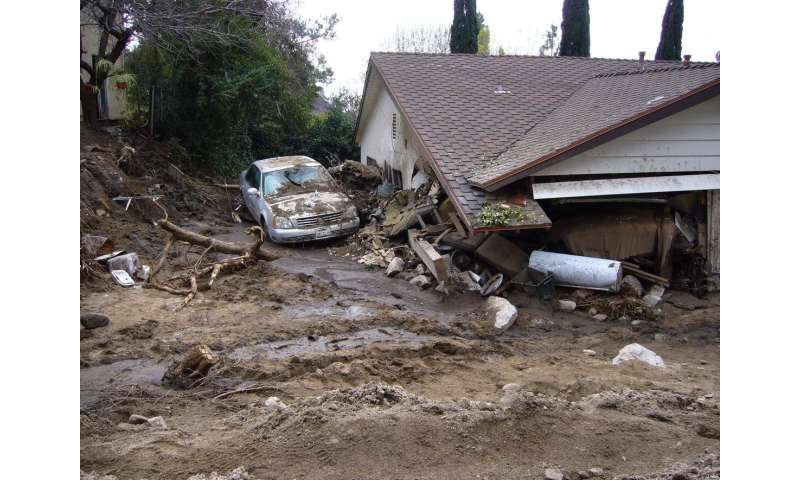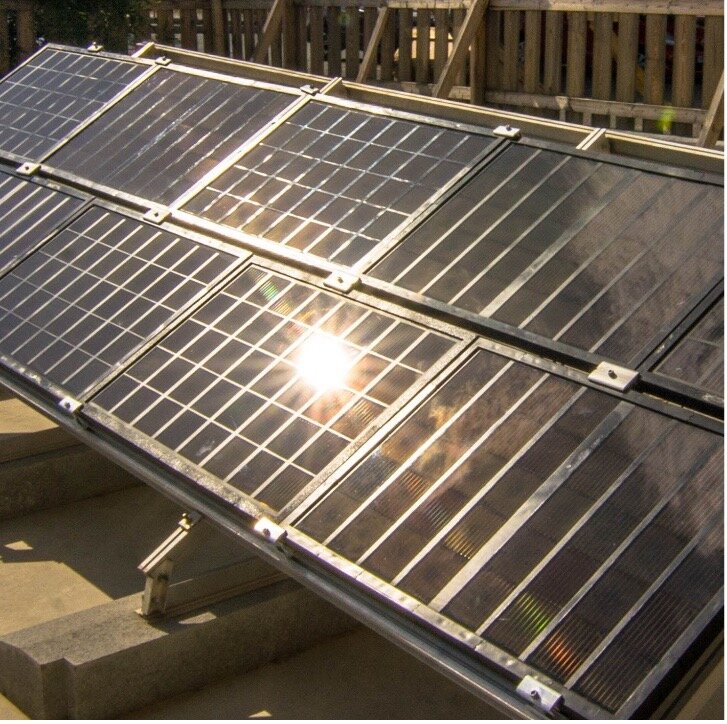#Understanding when and how slope failure may occur

“#Understanding when and how slope failure may occur”

Across the western U.S., severe wildfires fueled by tinder-dry vegetation have already burned more than 3.2 million hectares (8 million acres [as of the time of this press release])—an area the size of Maryland—in 2020, and nearly six times that area burned this year in Australia. And even though neither country’s worst-ever fire year is not yet over, concerns are already mounting regarding the next hazard these regions will face: dangerous and destructive debris flows.
Debris flows are fast-moving slurries of soil, rock, water, and vegetation that are especially perilous because they usually occur without any warning. Some debris flows are powerful enough to cart off everything in their paths, including trees, boulders , vehicles—and even homes.
Two years ago in Montecito, California, 23 people were killed and more than 400 homes damaged by a series of debris flows spawned by intense rain falling on hills scorched by what at the time had been the largest fire in California history.
To better understand the origin of these hazards, researchers at the U.S. Geological Survey (USGS) studied slope failure at two sites in Southern California’s San Gabriel Mountains. The first site burned in 2016 during the San Gabriel Complex fire, whereas a second, nearby site was charred during the 2014 Colby fire. The findings, presented Wednesday during the annual meeting of The Geological Society of America, indicate there were major differences in slope failure between the first and the third years following incineration. The results will help inform land managers and residents about when and where debris flows and other types of slope failure are more likely to occur.

“In the first year after each fire, we observed debris flows generated by rainfall runoff,” says Francis Rengers, a USGS research geologist who led the study. “But as we continued monitoring, we were surprised to see that a storm with a higher rainfall intensity than the first year’s storms, resulted in more than 280 shallow landslides, rather than debris flows, in the third year.”
In contrast to debris flows, which have fluid-like behavior, landslides glide as cohesive masses along a rupture plane. The researchers, including scientists from the University of Arizona, the Desert Research Institute, the USGS, and the German Research Centre (GFZ) believe this difference is due to changes in how much water can infiltrate into the ground during storms that follow wildfires. Because severe wildfires make soils more water-repellent, Rengers says, rainfall tends to run off burned ground. “If water is not soaking in,” he explains, “it’s flowing over the surface.” By removing ground cover, wildfires also reduce a hillslope’s roughness, which helps the slurry pick up speed. Incineration can also allow rainfall on bare soil to create what he calls a “surface seal” that further increases runoff.
Because landslides have much shorter runouts than debris flows, they pose different hazards. “The landslides we observed would primarily impact local infrastructure in the forest, such as roads, transmission lines, and culverts,” Rengers explains. By contrast, he says, debris flows move sediment much further downstream and therefore pose a hazard beyond the steep, mountainous hillslopes. “Runoff-generated debris flows threaten lives and property, including homes,” he says.
The results offer a ray of hope that the threat of slope failure has a limited duration: the researchers found that within five years, the density of landslides on burnt slopes in the San Gabriels was nearly equal to the density in unburned regions. This indicates the vegetation in this region recovers within half a decade.
Based on these observations, the researchers have developed a new conceptual model of post-wildfire slope failure that has three distinct stages. During the ‘no-recovery’ phase, increased runoff makes debris flows more prevalent. Within a couple of years, increasing water percolation, combined with the decay of roots from vegetation destroyed in the fire, make the slopes more susceptible to landsliding during the ‘initial recovery’ stage. After about five years, new roots become established enough to stabilize the hillside in the final ‘fully recovered’ phase.
In the future, the researchers plan to investigate whether this same model applies to other regions, such as the Rockies and the Pacific Northwest, which also experienced severe wildfires this year. For now, the results have immediate and practical applications for land managers who are dealing with the 2020 aftermath. “Our model suggests that debris flows will be the primary concern during the next one to two years, at least in the burn scars in Southern California, and after that the concern will shift toward shallow landslide hazards” says Rengers. “I hope our work offers land managers useful expectations regarding how these processes are likely to evolve and helps them prioritize post-wildfire mitigation and planning.”
Wildfires can cause dangerous debris flows
Presentation: The Evolving Types of Mass Failure After a Wildfire: gsa.confex.com/gsa/2020AM/meet … app.cgi/Paper/354344
Citation:
Post-wildfire hazards: Understanding when and how slope failure may occur (2020, October 27)
retrieved 28 October 2020
from https://phys.org/news/2020-10-post-wildfire-hazards-slope-failure.html
This document is subject to copyright. Apart from any fair dealing for the purpose of private study or research, no
part may be reproduced without the written permission. The content is provided for information purposes only.
For forums sites go to Forum.BuradaBiliyorum.Com
If you want to read more Like this articles, you can visit our Science category.



